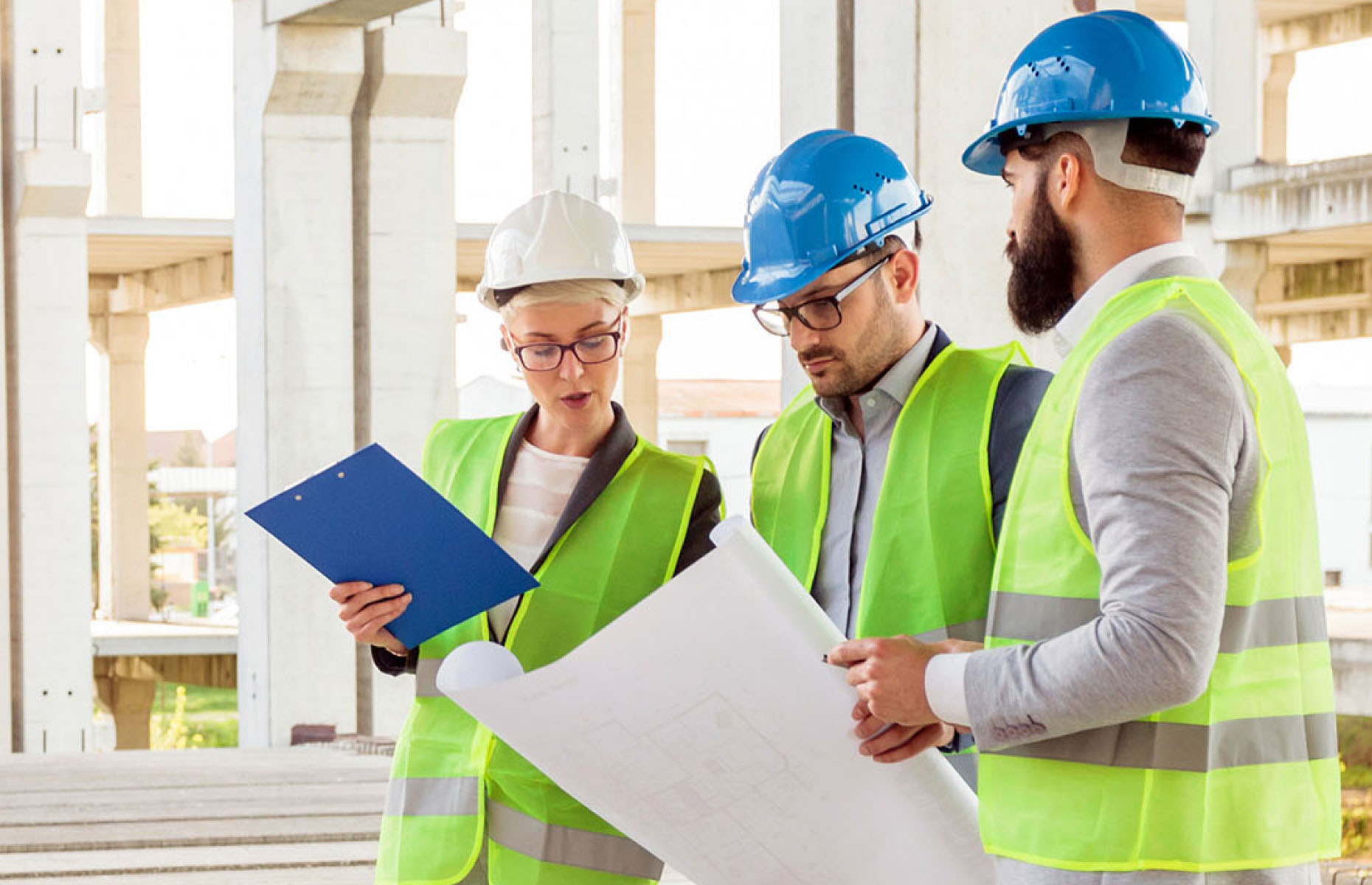Enter your email address to receive the latest ITVET news, market insights, and useful IT tips.
Smart buildings and digital-first workplaces rely on strong IT infrastructure. And yet, many still treat it as an afterthought. In commercial construction, project teams often push IT planning to the final stages – or even leave it until after completion. This oversight can result in costly delays, design compromises, and rework that disrupt timelines and inflate budgets.
The reality is clear: construction firms should embed IT infrastructure design from day one, and not treat it as a post-build add-on. When you plan digital systems in parallel with the physical build, it ensures smooth integration, efficient project delivery, and greater long-term property value.
In this article, we explore how early-stage IT infrastructure design can lay the foundation for your project’s overall success. Additionally, we discuss why partnering with an expert IT infrastructure consultancy like ITVET is a smart choice for achieving long-term value.
Table of contents:
- What is IT infrastructure design?
- 7 Reasons to prioritise IT infrastructure from day one
- A trusted IT partner for your next construction project
What is IT infrastructure design?
IT infrastructure design is the strategic planning of a building’s digital backbone. It covers all hardware, software, networking, and connectivity components required to ensure technology operates reliably and efficiently.
Modern buildings, whether office spaces, shopping centres, mixed-use assets, or hotels, are increasingly powered by technology. From high-speed networks and smart lighting to access control and digital signage, every system depends on a robust, well-integrated IT infrastructure.
This means embedding digital infrastructure into the building’s core design, ensuring digital and physical systems fully align from the outset. This includes the strategic placement of network cabling, cabinets (cabs), switches, wireless access points (WAPs), and security systems.
7 Reasons to prioritise IT infrastructure from day one
1. Lays the groundwork for long-term value
IT infrastructure design isn’t just about getting systems up and running – it’s about creating a resilient digital foundation that supports the building’s entire lifecycle. A proactive IT infrastructure plan ensures this backbone drives operational efficiency, simplifies ongoing maintenance, and reduces running costs over time.
By embedding future-proof and scalable IT infrastructure from the outset, developments can better accommodate evolving tenant requirements and rapid tech advancements. This flexibility attracts and retains high-quality tenants, enabling property owners to command higher rental premiums and enjoy lower vacancy rates.
Ultimately, investing in IT infrastructure enhances a building’s market appeal, increases property value, and safeguards long-term return on investment. Integrating IT infrastructure early in the project ensures these benefits are embedded from the ground up. This strategy helps establish a solid foundation for lasting success.

2. Avoids costly rework and delays
Overlooking IT infrastructure during the construction phase often leads to expensive revisions, unexpected delays, or system limitations down the line. For instance, discovering too late that you need to reopen walls to install cabling for CCTV or access control can cause major disruption. These setbacks can drive up labour and material costs, delay occupancy, push back handover dates, and compromise the overall quality and performance of the building.
Involving IT specialists early eliminates guesswork and minimises the risk of rework. A collaborative approach ensures that critical IT infrastructure components, such as network cabling, hardware installations, and connectivity, are fully embedded within the construction schedule. The result? Fewer delays, lower costs, and a smoother build process from start to finish.

3. Ensures future-readiness and scalability
Technology evolves fast, and your building’s infrastructure needs to keep pace. A future-ready IT design doesn’t just meet today’s requirements; it anticipates what’s next. Whether it’s accommodating new devices, increasing data usage, or next-generation connectivity, you must build scalability into the very foundations of the design.
Scalable IT infrastructure offers built-in capacity for growth and supports emerging innovations such as 5G, AI, and edge computing, without the need for costly, disruptive retrofits. By planning for flexibility from day one, developers can extend the building’s lifecycle, reduce long-term costs, and maintain a competitive edge in a fast-moving digital world.

4. Integrates smart building technologies
Smart buildings are defined by their ability to adapt, optimise, and respond in real time. This intelligence is powered by a robust IT infrastructure that supports seamless connectivity and data flow. From lighting and HVAC to energy management and security, every system must be interconnected to work efficiently and deliver real value.
By embedding IT infrastructure into the construction blueprint, it becomes far easier to integrate smart technologies.
This enables:
- Seamless automation of Building Management Systems (BMS)
- Real-time monitoring, remote access, and actionable data insights
- Smarter energy use through intelligent lighting, heating, and cooling systems
- Enhanced occupant experiences with features like smart access, wayfinding, and personalised services
When construction and IT teams collaborate from the start, developers can deliver truly intelligent, future-ready buildings. This seamless integration makes properties easier to manage, more cost-effective to run, and significantly more attractive to prospective tenants.

5. Enhances cyber security and compliance
In today’s interconnected buildings, cyber security is a fundamental part of IT infrastructure design. Embedding multiple layers of defence into the infrastructure from the outset ensures the building is secure, compliant, and resilient, ready for the handover. This includes deploying advanced firewalls, endpoint protection, intrusion detection systems, and strict access controls.
Designing cyber security into the core infrastructure provides a strong, secure foundation. This proactive approach safeguards critical systems, maintains operational continuity, and builds long-term confidence among tenants and stakeholders.

6. Improves sustainability and energy efficiency
Sustainability is no longer a nice-to-have feature – it’s a core requirement in modern construction. With mounting pressure from regulators, investors, and tenants, construction companies must prioritise environmental performance from the outset. Smart IT infrastructure plays a crucial role in reducing energy consumption, cutting carbon emissions, and demonstrating a genuine commitment to long-term sustainability.
By integrating occupancy sensors and smart controls, buildings can automate energy use in response to real-time conditions. For example, lighting systems automatically adjust based on whether a space is in use. This helps cut energy waste without compromising comfort or performance.
Alongside automation, real-time energy monitoring supports ongoing optimisation. Centralised dashboards provide clear visibility into energy consumption patterns. These insights empower building managers to identify inefficiencies, make informed decisions, and drive continuous improvements in environmental performance.
Early integration of these technologies makes it far easier to meet sustainability targets, secure green certifications, and futureproof your development. Additionally, it positions you to unlock financial gains early on by increasing asset value, enhancing tenant retention, and reducing operational costs. This drives stronger returns on your investment.

7. Boosts collaboration and supports project delivery
IT infrastructure design is not just a technology issue – it’s a critical part of the overall construction process. From day one, architects, construction firms, M&E consultants, and IT professionals must work closely together to align goals, technical requirements, and timelines.
Clear, consistent communication between all stakeholders helps ensure smooth project management, coordinated installations and inspections, and faster problem-solving. This collaboration is vital to delivering a fully integrated, high-performance building.
Early IT involvement is crucial to achieving key milestones such as Practical Completion (PC). Missing these deadlines can lead to significant fines and reputational damage. A well-defined IT strategic plan ensures digital infrastructure is aligned from the outset. This proactive planning helps avoid last-minute issues that can derail delivery timelines and inflate costs.
By embedding collaboration at the heart of the construction process, developers minimise risks, streamline delivery, and ensure their buildings are future-ready.

A trusted IT partner for your next construction project
ITVET is a leading technology partner specialising in IT consultancy, smart building solutions, and managed IT services for the commercial property sector. We design robust IT infrastructure from the ground up. This early involvement helps developers futureproof buildings and meet the growing demands of modern occupiers.
With a focus on innovation, compliance, and sustainability, we provide tailored solutions that integrate IT seamlessly into your commercial property. From cyber-secure networks and intelligent building controls to ongoing support and monitoring, every system is built for performance, resilience, and long-term value.
Trusted by leading property developers and construction firms across the UK, we create intelligent, connected spaces. These buildings enhance tenant experiences, streamline operations, and boost returns on investment.
Ensure your building performs flawlessly from day one and delivers long-term value. Contact us to find out how we can support your next construction project.






